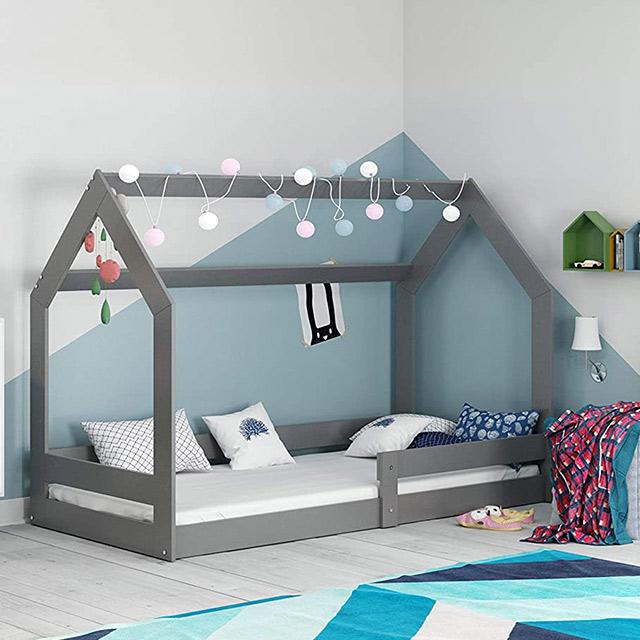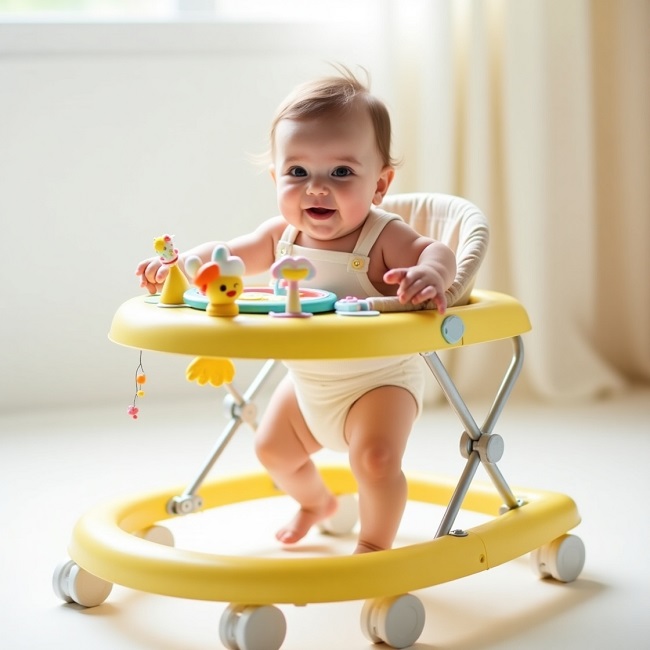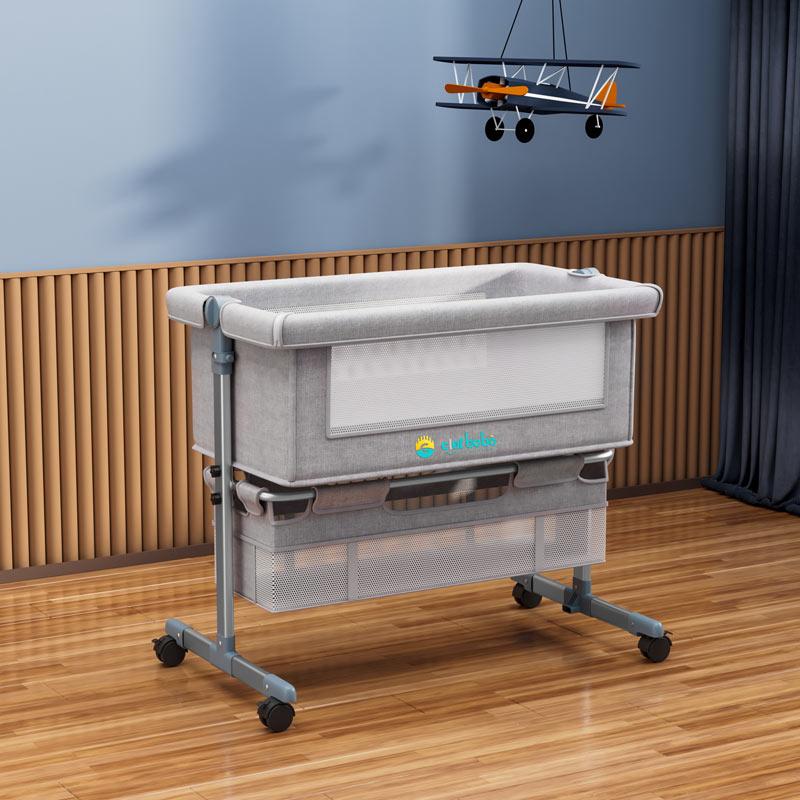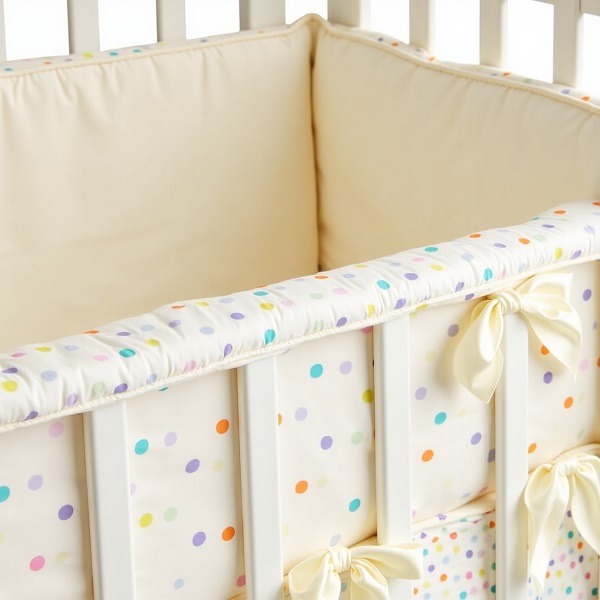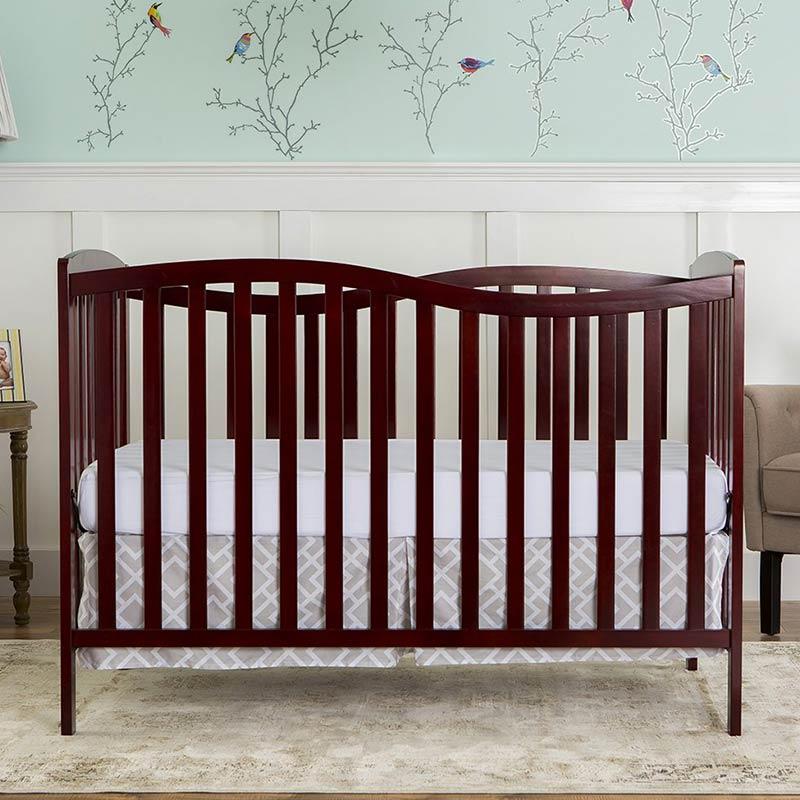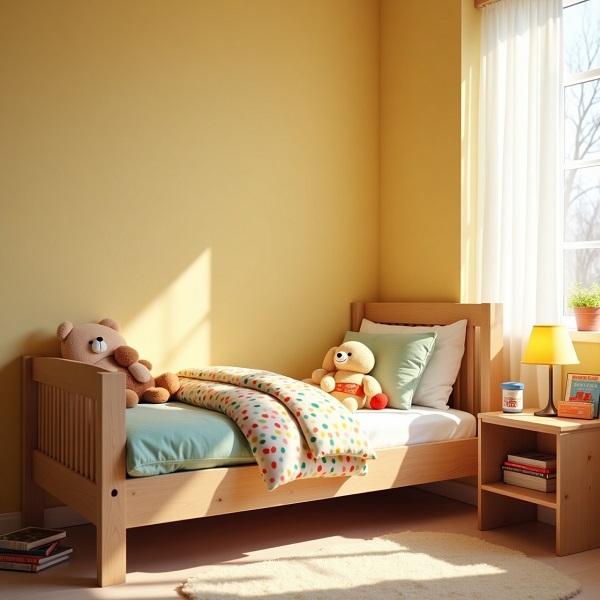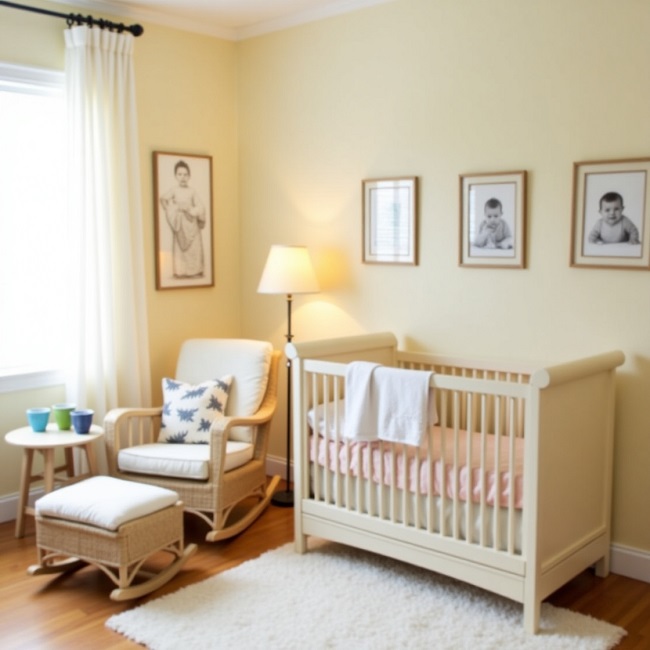One such philosophy that has significantly influenced child-rearing practices is the Montessori method. It is not just an educational approach but a way of life that extends to all aspects of a child’s environment, including sleep.
Today we take you to explore the Montessori bed – a simple yet revolutionary piece of furniture that embodies the Montessori principles of independence and freedom.
Montessori Beds: Definition and Features
The Montessori method, developed by Dr. Maria Montessori, champions a child’s natural curiosity and self-directed growth. At its core, it’s about creating environments where kids feel empowered to explore, learn, and make choices suited to their developmental stage.
Nowhere is this philosophy more tangible than in the Montessori bedroom—a space designed for children, by the principles of safety, accessibility, and freedom.
Central to this setup is the Montessori bed: a simple, low-to-the-ground sleeping space that tosses out traditional crib rails and towering frames. Picture a mattress resting directly on the floor or atop a minimalist platform just inches high. Without barriers, children can climb in and out independently—whether they’re crawling out at dawn to greet the day or toddling back for an afternoon nap.
The bed’s ultra-low height eliminates the risk of falls, a common worry with raised cribs. If a child rolls out, they’re barely a few inches from the ground.
From their first steps, kids learn to listen to their bodies. Feeling tired? They can climb into bed. Wide awake? They’re free to explore their room without waiting for help.
A Montessori bed isn’t just where kids sleep—it’s where they begin to understand autonomy. Imagine a toddler waking up and deciding to flip through a board book, play with soft toys, or pad over to a low shelf for a puzzle—all within their safe, curated space. This freedom nurtures problem-solving skills and confidence, turning everyday moments into opportunities for growth.
Benefits of using Montessori Bed
Montessori beds are designed to implement the Montessori philosophy and foster independence, safety, and overall well-being in children.
Promote Independence
By ditching tall rails and barriers, Montessori beds let kids crawl in and out freely. This simple design encourages them to listen to their bodies—snuggling into bed when tired, and climbing out to explore when rested.
Over time, they learn to regulate their sleep patterns without relying on adults to “rescue” them from a crib. It’s a gentle nudge toward self-reliance, building confidence with every “I did it myself” moment.
Enhance Safety
Traditional beds can turn nighttime wiggles into worrisome tumbles. Montessori beds eliminate that fear. Sitting just inches off the floor, they turn potential falls into harmless rolls.
Support Child Development
Freedom to move isn’t just fun—it’s educational. Climbing in and out of bed strengthens gross motor skills while navigating their room sharpens spatial awareness. The bed becomes a launchpad for exploration, whether they’re grabbing a book from a low shelf or toddling to a toy basket.
Smooth Transition from the Crib
Transitioning from a crib to a “big kid bed” can feel jarring. Montessori beds act as a comforting middle ground. The open, accessible design retains the crib’s boundaries while granting newfound freedom. Kids adjust to sleeping independently without feeling overwhelmed, making the shift smoother for everyone.
When to Start Montessori Bed?
While there is no set age for this transition, many parents choose to begin using a Montessori floor bed between six months and three years of age.
A Montessori floor bed is typically started when your child is developmentally ready to transition from a crib or bassinet to a bed.
If your baby can crawl, sit, or stand independently, they are more capable of safely using a low Montessori bed. Some children may prefer to transition to a floor bed when they are already accustomed to sleeping independently or have established a consistent bedtime routine.
If you align with the principles of Montessori education and value promoting independence and freedom of movement, you may choose to begin using a Montessori floor bed with guardrails early in your child’s development.
Who Should Consider A Montessori Bed?
When children need to move from cribs and cradles, parents always need to find a new place for them to sleep. Montessori beds are certainly not the only transition solution, but it is indeed a good solution. Families with the following situations can focus on this furniture:
- Parents whose young children are transitioning from cribs: the floor-level design eliminates the risk of falling from high beds, which reduces your worries.
- Families who accept the Montessori philosophy: If you accept the Montessori philosophy, then a Montessori is essential.
- Parents who pursue safety and accessibility: If you want to see your little one crawling in and out without you and see them arrange their own sleep.
- Parents who encourage independence: If you want to cultivate your child’s decision-making ability and ability to manage daily activities, a Montessori bed is a good tool.
As a transitional solution, you must have considered a toddler bed, and you may be hesitant between the Montessori bed and the toddler bed. There is no good or bad choice, it depends on your philosophy and actual needs.
The height of the toddler bed is also low, but it is still a certain distance from the ground, which is also very suitable for your child to sleep after leaving the crib or cradle. To help you make a better decision, you can refer to the following comparison table between the two:
| Montessori Bed | Toddler Bed | |
| Purpose | To allow children to get in and out of bed on their own, promoting self-reliance and mobility | Designed for toddlers transitioning from a crib to a “big kid” bed |
| Safety Features | Minimal barriers to promoting autonomy, but parents must ensure the environment is safe (e.g., padded floors) | A transitional bed for toddlers, keeping them safe while moving away from a crib |
| Age Range | Typically for children ages 18 months to 5 years (or as long as the child feels comfortable) | Typically used for toddlers around 18 months to 3-4 years old |
| Appearance/Style | Often minimalist, open, and closer to the floor to integrate seamlessly into the room | More traditional with a raised frame and a bed structure that resembles an adult bed, often with added features like a headboard |
| Cost | Can be more expensive due to the custom, eco-friendly nature of many Montessori beds | Generally more affordable |
Types of Montessori Beds
Floor Bed
This is the simplest and most traditional Montessori bed. The floor bed is a mattress placed directly on the ground or a low platform, without even a bed frame or other decorations.
It is also suitable for minimalism. It only needs a mattress to complete it. Hence, the floor bed is also very economical and ideal for families who may change their children’s sleeping tools again in the short term, because you can discard it without any regrets.
House Frame Bed
The house bed is an upgraded product off the floor bed. It still retains the low-height design but has a dreamy and imaginative design. It uses a wooden frame in the shape of a house, like a warm and cute little house, which makes countless children dance with joy.
Because of this fantasy design, people can add a lot of interesting elements to it, such as hanging lights, curtains, or some decorations, dressing it up as a paradise that can attract children to stay in it.
Platform Bed with Rails
A platform bed with rails is a low-profile bed that combines the functionality of a Montessori-style platform bed with added safety features in the form of side rails or barriers, providing peace of mind for parents worried about their children.
Although a child rolling off a Montessori bed is unlikely to cause much harm, parents still worry that young children will roll around while sleeping, or even end up sleeping on the floor without realizing it. This bed retains the low-profile design but adds side rails for extra protection.
Setting Up a Montessori Bedroom
If you want to create a child-centric Montessori bedroom that will be a warm haven for your child, then it’s time to start preparing.
Natural themes, soft colors, and natural materials work well in a Montessori environment. Choose furniture and decorations that are simple and made of natural materials. Ditch the clutter and unnecessary decorations that may overwhelm the space.
You should baby-proof the room so they can play around in it safely, such as:
- Cover electrical outlets.
- Use safety latches on drawers and cabinets.
- Anchor furniture to the wall to prevent tipping.
- Make sure the floor is soft and suitable for crawling or walking.
You should be completely child-friendly and make sure most of the room is at children’s eye level, such as:
- Use low shelves to hold books and toys
- Place a low wardrobe or drawers within the child’s reach
- Artwork and other decorative elements are at eye level
You should be creative and divide the room into specific areas for sleeping, playing, and learning. For example:
- Sleeping area: Keep this area quiet and undisturbed.
- Reading corner: Add a small bookshelf and a cushion or chair to create a cozy reading corner.
- Play area: Include open floor space and a small table or mat for activities.
You can add more educational elements to the room to make it easy for your child to learn while playing, such as:
- Hang a world map on the wall
- Use wall stickers and rugs with letters, patterns, or numbers
FAQ
What Age Is a Montessori Bed Suitable For?
Montessori beds are generally recommended for children between 18 months and 5 years old.
Are Montessori Beds Safe?
Montessori beds are designed to be safe, but like any furniture, safety depends on the surrounding environment. Parents should ensure the room is child-proofed (e.g., soft flooring, safe furniture) to prevent accidents.
How Can I Make a Montessori Bed More Comfortable?
To make a Montessori bed more comfortable, you can use soft bedding, add a soft rug or play mat around the bed, and include pillows or cushions to create a cozy sleep space.
Can I Build My Own Montessori Bed?
Yes, many parents choose to build their own Montessori beds. There are plenty of DIY plans available online. Building your own can save money and allow you to customize the bed to fit your space and aesthetic.
Conclusion
In conclusion, a Montessori bed is more than just a piece of furniture; it’s a tool that supports the natural development of children by fostering independence, safety, and learning.
Whether you’re considering making the switch from a crib or looking to redesign your child’s nursery, a Montessori bed offers a multitude of benefits that align with the Montessori principles of education.
With the right preparation and approach, a Montessori bed can be a wonderful addition to your child’s bedroom and to their growth journey.
Recommended Related Articles:

